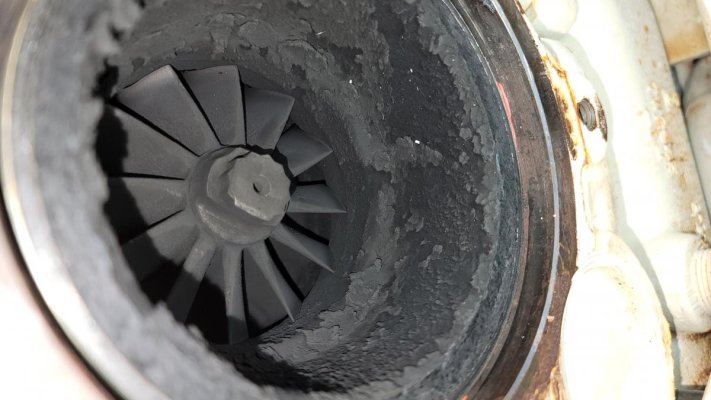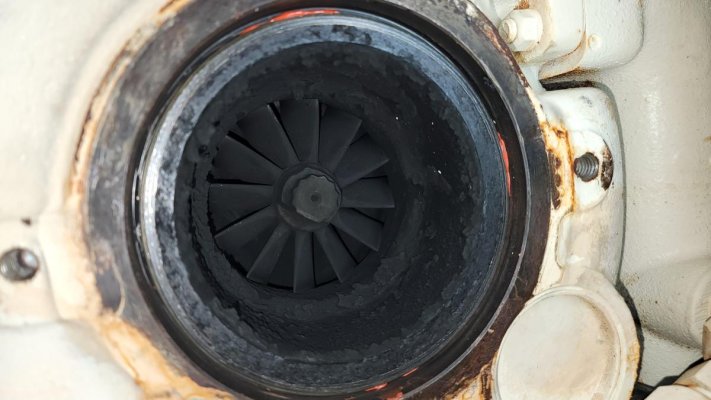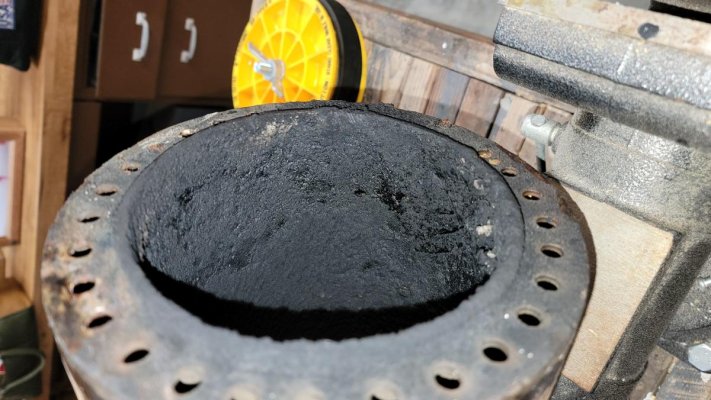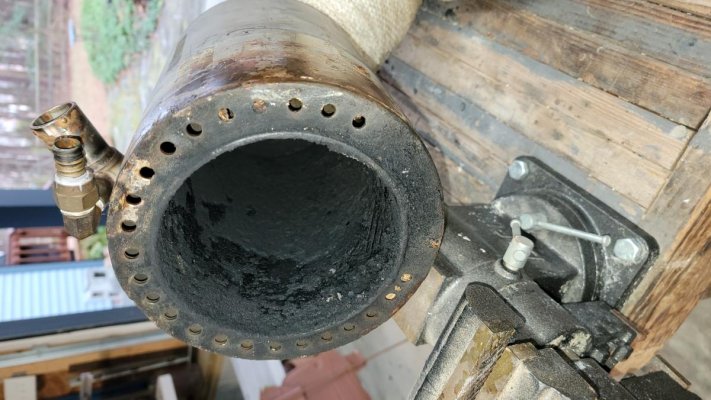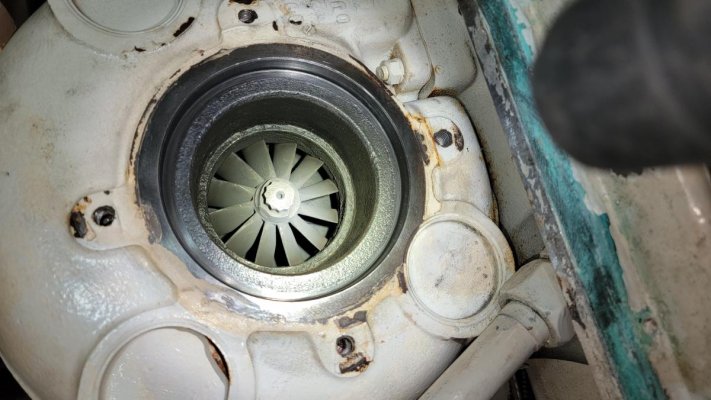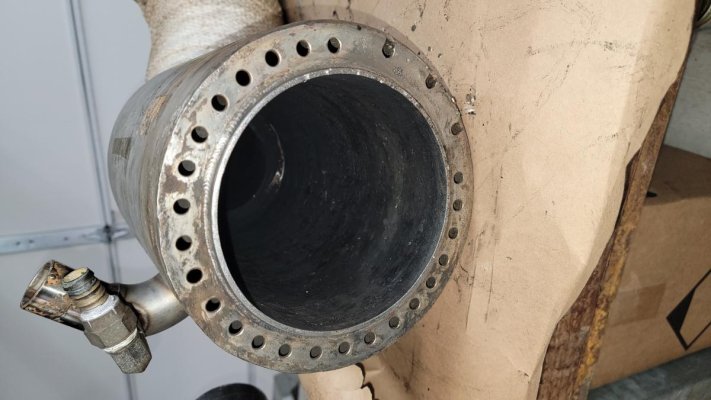Some answers to previous posts.
I did consult with a long time Cat mechanic who is now in business for himself. His response was that the accumulation of carbon behind the turbo in the exhaust elbow was not a cause for concern, particularly if the engines had habitually been cruised at lower RPMs. After getting his thoughts, I posted this question on this and other boat forums to get some additional opinions.
When I purchased my boat nine years ago, the engines made 2650 and 2825 during the sea trial on clean running gear, with a lightly loaded boat, on a sub freezing temp day. This reading was on the boat’s installed tachometers. For some reason, the mechanic from the local Cat dealer that I hired for the engine portion of the sea trail missed recording the max power tach numbers using his direct reading tachometer. I was not very impressed with what I got out of his engine survey.
When running the boat at max power over the years, I normally see between 2600 to 2700 RPM. (I made a chart correlating my direct, hand held tach readings with the boat’s installed tach gauges). Max RPM varies depending on weight on board, air temps, sea state, and fuel filter, air filter, and running gear cleanliness.
Both engines consume about a quart of oil every 15 hours. I am sure that contributes to the carbon build up in the turbos. Four years ago, I blew a head gasket on startup. That gave me a chance, during the repair, to see inside four of my cylinder walls. They are somewhat glazed. I can thank the previous four owners of the boat for also contributing to that condition. At this point, changing the way I cruise the boat, probably will not make a huge difference in engine life.
I also know that cruising at low RPM can result in too low oil temperatures, which can contribute to reduced engine life. A few years ago Cat addressed this problem with new engine regulators (Cat’s term for thermostats). The regulators begin to open at 192 degrees and are completely open at 207. I have installed these hotter running thermostats in both engines. My engine oil temps measured at the oil pans with a hand held infrared gun are over 190 degrees.
Concerning my props, I do not know the specific dimensions. Neither one is stamped. If I ever ding them, I may then explore sizing and pitch options.
The engines are obviously bigger than they need to be for this boat. When Grand Banks built it, fuel was cheap, time was precious and people thought having a fast trawler that could make 18 knots was what they needed. Although my boat will still make 18 knots, that is not the way I can afford or choose to cruise.
Thanks to all for sharing your opinions…that is what I was looking for.

